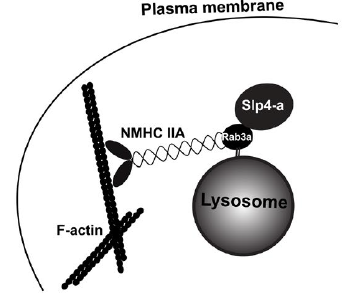Portuguese research paves the way in the treatment of tuberculosis and related diseases

The scientific journal Journal of Cell Biology recently published a study led by two researchers from the Center for the Study of Chronic Diseases (CEDOC), part of NOVA Medical School, Faculty of Medical Sciences, NOVA University Lisbon. The research describes the role of a protein complex that is fundamental to the cell membrane repair process in the context of tuberculosis infection and other chronic diseases. The work was chosen to be part of the Faculty1000 list, which brings together articles of high importance and potential.
The HMS researchers found that virulent and non-virulent strains of thetuberculosis pathogen(Mycobacterium tuberculosis) both cause infection, although they use different mechanisms. In both virulent and non-virulent strains, infection causes damage to the host cell membrane and cell death. In the case of infection with the virulent form of the pathogen, the cell is unable to repair the damage to the membrane, leading to M. tuberculosis infecting neighboring cells, spreading the infection and causing fulminant tuberculosis. On the other hand, in the case of infection with non-virulent strains, the cells also suffer damage to the membrane, but are able to repair this damage, so the infected cell dies but the microorganism does not spread to neighboring cells.
The discovery made in this study focuses on identifying the machinery involved in this cell membrane repair process, which was previously unknown, so the researchers focused on characterizing this process. They found that the Rab3a protein, which had already been described in other contexts, such as neuronal synapses, proved to play an essential role in cell membrane repair, since repair is inhibited in the absence of this protein. In order to function, Rab3a needs to recruit effectors, i.e. other proteins that bind to it, forming a protein complex that thus becomes active and functional in cell membrane repair by lysosomes.
This advance in knowledge can be applied to tuberculosis, but also to other contexts in which cell membrane damage occurs, such as physical exercise. It could also be used in the context of some rare lysosomal overload diseases, to enable the development of new therapies based on the release of the lysosomal contents that cause these diseases to the outside of the cell.
Otília Vieira and Duarte Barral, researchers at CEDOC, led this study, which had the collaboration of researchers from the University of Coimbra and Harvard Medical School (HMS), and was funded by the Harvard Medical School - Portugal Program.
Together with iBET, IPOLFG and ITQB-UNL, CEDOC is part of the R&D unit called iNOVA4Heath - Translational Medicine Program, funded by FCT.
Source: NOVA Medical School | Faculty of Medical Sciences.
Image: Schematic model of the cell membrane repair process.